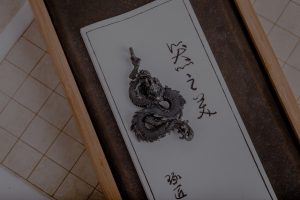**Abstract:** Discover the art of positioning feng shui ornaments to enhance your living space’s energy flow and create a harmonious environment. This guide reveals practical tips for maximum effectiveness.
Understanding Feng Shui Principles
Feng shui is an ancient Chinese practice that focuses on harmonizing individuals with their surrounding environment. It emphasizes the flow of energy, or “chi,” and how it can be influenced by the placement of objects. By understanding the fundamental principles of feng shui, you can create a balanced atmosphere that promotes well-being, prosperity, and happiness. Each ornament has its unique significance and energy, which can be harnessed effectively through mindful placement.
Selecting the Right Ornaments
Choosing the appropriate feng shui ornaments is crucial for achieving the desired effect. Common items include crystals, statues, and plants, each representing different energies and elements. For instance, crystals are known to amplify energy, while plants symbolize growth and vitality. Assess your space and identify areas that require enhancement—be it wealth, health, or relationships. Select ornaments that resonate with your intentions, ensuring they align with the specific energies you wish to cultivate.
The Importance of Location
The placement of feng shui ornaments is key to maximizing their effectiveness. Begin by analyzing the Bagua map, a tool that divides your space into nine areas, each corresponding to different aspects of life. For example, the wealth corner is located in the far-left section of your home or office. Positioning ornaments related to abundance—such as a wealth bowl or a money tree—in this area can invite prosperity into your life. Remember that each corner holds unique energy, so tailor your ornament placements accordingly.
<strong.Balancing the Five Elements
Feng shui is rooted in the concept of five elements: wood, fire, earth, metal, and water. Each element contributes to a balanced environment, and incorporating them into your ornamentation is essential. For instance, wooden ornaments can enhance creativity, while metal items promote clarity and focus. Aim for a harmonious blend of these elements in your space. This not only fosters balance but also nurtures a positive atmosphere conducive to personal growth and fulfillment.
<strong.Maintaining Clutter-Free Spaces
Clutter disrupts the flow of energy and can hinder the effectiveness of feng shui ornaments. Regularly declutter your space to ensure that energy can circulate freely. Create designated areas for your ornaments, allowing them to shine without competing for attention. A clean, organized environment not only enhances the aesthetic appeal but also amplifies the positive energy of your feng shui items. Remember, less is often more when it comes to creating a harmonious space.
<strong.Personalizing Your Space
Feng shui is not a one-size-fits-all approach; it should reflect your personal style and preferences. Incorporate ornaments that hold special meaning for you—be it a family heirloom or a souvenir from a meaningful trip. This personal touch will enhance the energy of the space, making it feel more inviting and comfortable. Your connection to the ornaments will amplify their effectiveness, as positive energy is often rooted in personal significance.
<strong.Evaluating and Adjusting
Finally, remember that feng shui is an ongoing practice. Regularly evaluate the energy in your space and be open to making adjustments as needed. Life changes, and so should your environment. If you notice stagnant energy or feel a lack of motivation, consider rearranging your ornaments or introducing new ones. Trust your intuition—your instincts will guide you toward creating the most effective feng shui environment for your needs.
By understanding and applying these principles, you can harness the power of feng shui ornaments to create a space that nurtures your aspirations and fosters a sense of well-being. Embrace the journey of transformation, and watch as your environment evolves into a sanctuary of positive energy.










